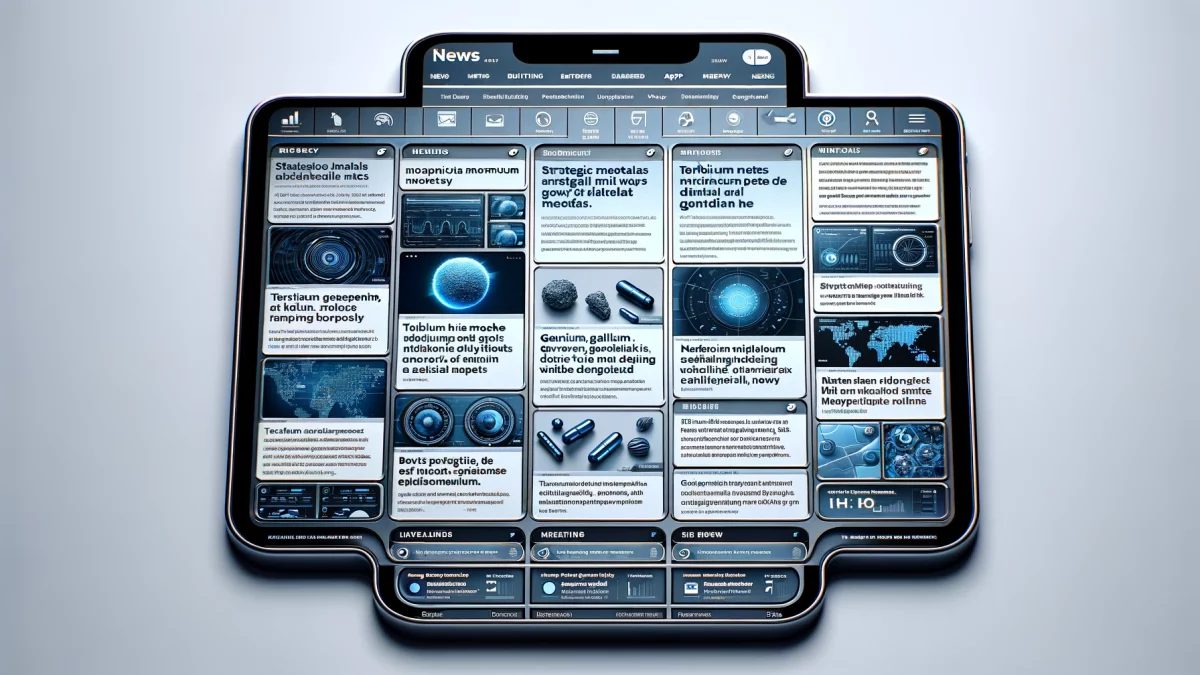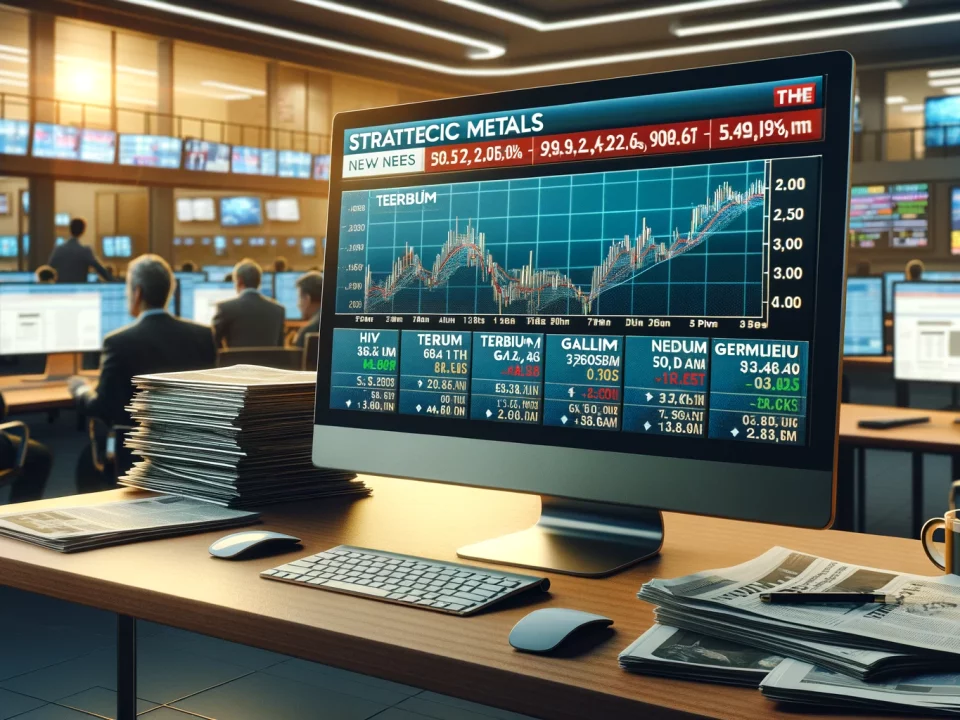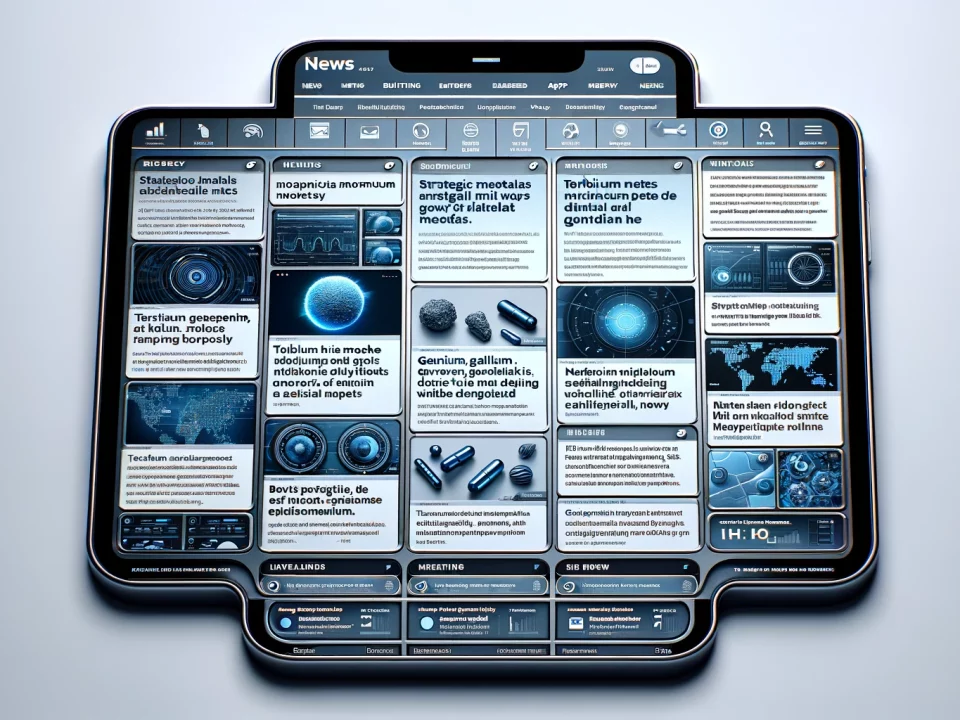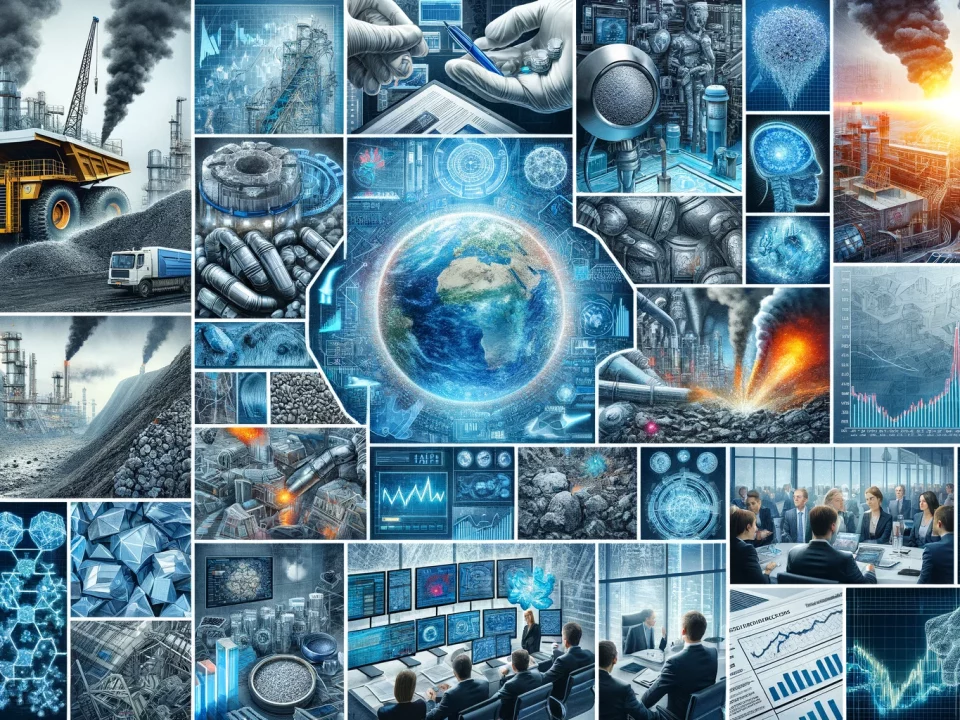
Weekly News Review Feb 19 – Feb 25 2024
February 25, 2024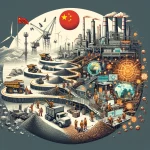
The Great Consolidation – How China became the worlds rare earths super power in 20 years.
March 7, 2024Welcome to our weekly news round-up.
HIGH-TECH MATERIAL GRAPHENE: THE EU WANTS TO BE THE FORERUNNER.
Graphene is a material that is extracted from graphite and is made up of pure carbon.
The EU’s new strategy aims to promote investment and accelerate the market launch of modern materials.
High-tech material in demand: graphene and its potential use in areas such as batteries, quantum computers, medical technology, the military, and space technology are currently the subject of intensive research. Graphene is one of the thinnest materials in the world. Graphene consists of a single layer of carbon atoms. It is characterized by transparency, outstanding conductivity, flexibility, and tear resistance, among other things. Researchers are forecasting significant annual growth rates between 20 and 50 per cent for the global graphene market. The EU Commission has presented a strategy to take on an industrial leadership role in advanced materials.
The objectives include better coordination of research and investment in the EU member states. The market launch of innovative materials is to be accelerated through artificial intelligence (AI), among other things, and the training of specialists is also planned. As part of a new partnership with industry, investments of 500 million euros are scheduled from 2025 to 2027, with at least 250 million coming from private sources.
Not widely known is that Graphene has been receiving funding in the EU for over a decade.
The strategy now presented is not the first EU measure to promote the development of modern materials. For example, the Graphene Flagship Initiative has been bringing together 118 academic and industrial partners in numerous projects for over a decade.
The EU Commission writes that Europe has a strong position in developing these so-called 2D materials, but continuous innovation is needed to ensure technological sovereignty and strategic autonomy. Dependencies should be reduced through recycling and reuse, among other things.
This pattern is also evident in many other technologies, such as permanent magnets, batteries, or fuel cells: the EU’s strengths often lie in the early stages of development, such as patents and research, while commercialization and financing in later market phases are lacking. In addition, many of the required raw materials and components are highly dependent on imports.
Not only that, but it is highly dependent on one country, China.
China is the dominant market leader in the supply of the raw materials that are the backbone of manufacturing in this 21st century. In some cases, like Gallium, China is responsible for 98% of the global supply. China is currently restricting the export of graphite, gallium, germanium and four rare earth elements as a retaliatory measure in its trade/technology dispute with the US.
DESPITE PROFIT DECLINE – LYNAS SEES ITSELF ON TRACK:
The most important producer of rare earths outside China presents half-year figures.
The Australian rare earth specialist Lynas presented its half-year figures today (PDF). Both turnover and profit fell significantly by 74 and 37 per cent, respectively, compared to the same period last year. CEO Amanda Lacaze referred to Lynas’ products’ persistently low price level. According to the company, China’s economic recovery could bring a turnaround.
The company added that the current financial year represents a transitional phase for the mining group. Lynas commissioned a processing plant for rare earths in Western Australia in December and is also working on expanding production at the Mount Weld mine. Until now, the raw materials mined here have been refined in Malaysia. According to the Group, the refinery was successfully retrofitted after several weeks of work and has been back online since January. This laid an excellent foundation for future success in the year’s first half.
AUSTRALIA CONSIDERS TAX CREDITS TO INCENTIVIZE THE PROCESSING OF DOMESTIC STRATEGIC METALS:
Measures would cover nickel, lithium, vanadium, cobalt, graphite, and rare earths sectors.
The Australian Government is considering implementing tax credits for companies constructing domestic critical mineral processing facilities, Reuters reports, citing the Association of Mining and Exploration Companies (AMEC) CEO Warren Pearce. The measure could be included in Australia’s 2024 federal budget, which is planned to be presented in May, and would set the country up to benefit more from its natural resources. It would provide companies that construct such projects with a production tax credit of up to ten percent, stretch beyond Australia’s nickel and lithium sector, and extend to the vanadium, cobalt, graphite, and rare earths sectors.
Australia exports most of its natural resources as raw materials to be refined abroad. Still, it has recently begun to revert course in an effort to profit from higher prices for processed minerals on the global market. For example, the largest rare earth producer outside China, Lynas, has shipped its rare earth ores to Malaysia so far but commissioned a newly constructed processing plant in Western Australia in December.
The Australian government has yet to reveal the final details of its 2024 federal budget. Resource Minister Madeleine King said last month that she “can’t make any commitments on the level of that tax credit”. Still, she emphasized that the government is pursuing ways to increase Australia’s critical mineral downstream processing industry. In addition to tax credits for domestic production, Australian Treasurer Jim Chalmers advocated for reforms that incentivize sustainable and responsible production practices globally at the G20 talks in Sao Paulo, Brazil. Relying on current supply chains and practices in the critical minerals industry would neglect the economic vulnerabilities of poorer communities, Chalmers said and advocated for implementing more environmental, social, and governance (ESG) standards.
SIGNIFICANT GROWTH IN GREEN TECHNOLOGIES:
With the fight against climate change in mind, global research into green technologies is growing.
Globally, the number of world-class patents in this area more than tripled between 2010 and 2022, from just under 50,000 to over 150,000, according to a study by the Bertelsmann Stiftung together with EconSight.
World-class patents are defined here as the ten percent of the most important patents. The USA leads the way, with one in three patents coming from the United States – but raw materials and electronics giant China is catching up strongly and is now in second place: From 2018 to 2022, the People’s Republic improved from 11,000 to 37,000 high-quality patents per year.
Europe and Germany, on the other hand, are slowly but steadily falling behind, even though they still play an important role in global research.
That’s all we’ve got for this week. As always, please reach out if you want to learn more.



